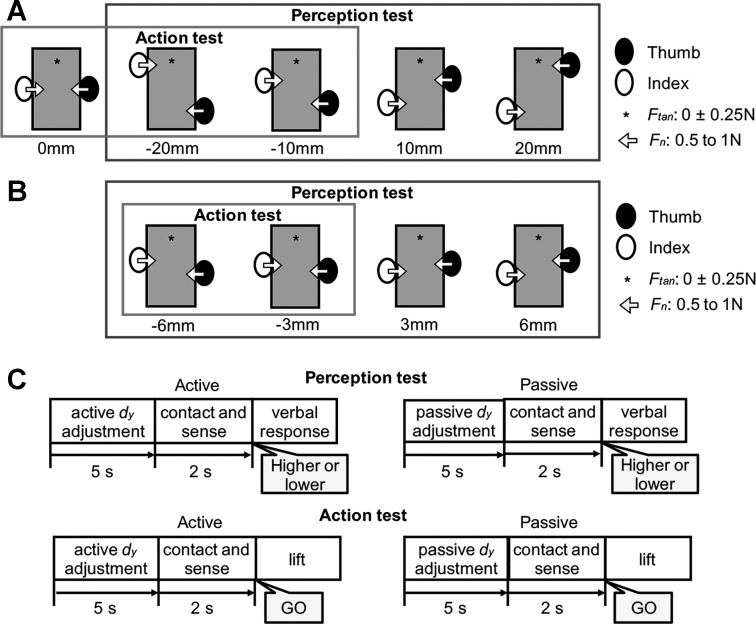Fig. 2.
Tests (perception, action), experimental conditions (active, passive), and protocols. A and B: relative digit positions and force requirements for perception and action tests in group 1 and group 2. We tested 4 relative digit positions (A: group 1, dy = −20, −10, 10, and 20 mm; B: group 2, dy = −6, −3, 3, and 6 mm) for the perception test (black box) and 3 and 2 positions (A: group 1, dy = 0, −10, and −20 mm; B: group 2, dy = −3 and −6 mm, respectively) for the action test (gray box). Subjects were asked to exert negligible tangential and normal digit forces. C: experimental protocols. In the passive dy adjustment phase of the perception and action tests, the subject’s thumb and index fingertip were passively placed by an experimenter to a given digit position. In contrast, subjects actively placed the center of pressure of the thumb and index finger to a given dy in the active dy adjustment phase of the perception and action tests. Once the desired dy and target digit forces were reached, subjects were asked to sense dy while maintaining the digit contacts and forces for ~2 s (contact and sense phase). In the perception test, subjects were cued to verbally report whether the index finger CoP was higher or lower than thumb CoP (verbal response phase). In the action test, a “Go” signal was given to subjects to lift the object while preventing it from tilting (lift phase).

